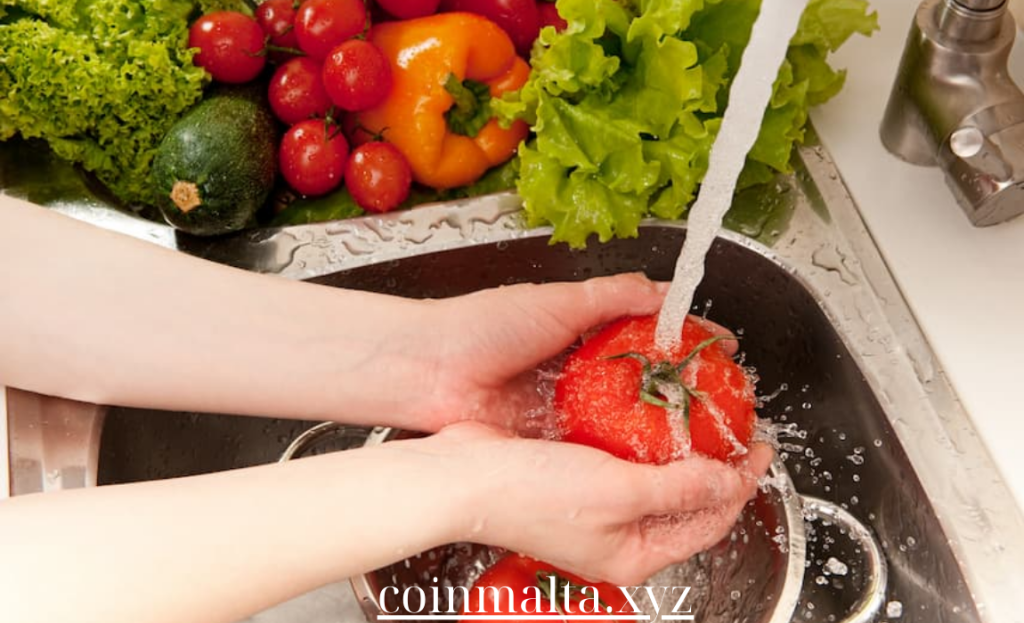Food Safety in Food Service
Food Service Hygiene Standards to Maintain Clean and Safe Environments
In the food service industry, maintaining high hygiene standards is not only essential for customer safety but also for preserving the reputation of a business. Proper hygiene practices ensure that food is handled, prepared, and served in a way that prevents contamination and illness. Here’s a comprehensive guide to the key food service hygiene standards necessary to maintain a clean and safe environment.
1. Hand Hygiene
Proper hand hygiene is one of the most critical practices in any food service setting. Food handlers can easily transfer bacteria, viruses, and other contaminants to food if they do not follow strict handwashing guidelines.
- How to Maintain: Ensure that all employees wash their hands with soap and water for at least 20 seconds before handling food, after using the restroom, touching garbage, or handling raw ingredients. Place handwashing stations in key locations with visible reminders to reinforce the importance of regular handwashing.
2. Sanitation of Equipment and Utensils
All kitchen tools, equipment, and surfaces must be regularly sanitized to prevent cross-contamination between raw and cooked foods. Bacteria can thrive on unclean surfaces, increasing the risk of foodborne illness.
- How to Maintain: Clean and sanitize cutting boards, knives, and other utensils after each use, especially when switching between raw and ready-to-eat foods. Use food-safe cleaning products and ensure proper drying before reuse. Regularly disinfect work surfaces, especially high-touch areas like countertops and door handles.
3. Proper Food Storage
Improper food storage is a leading cause of contamination in the food service industry. Storing food at incorrect temperatures can allow harmful bacteria to grow, posing a significant health risk to consumers.
- How to Maintain: Store perishable foods at the correct temperatures—refrigerators should be kept at 4°C (40°F) or below, and freezers at -18°C (0°F) or lower. Ensure raw meats are stored separately from cooked foods to prevent cross-contamination, and label all food with use-by dates to avoid spoilage.
4. Temperature Control
Controlling food temperatures during cooking, cooling, and reheating is essential for food safety. Improper temperature control can result in the growth of harmful bacteria like Salmonella or E. coli.
- How to Maintain: Use food thermometers to ensure that cooked foods reach the correct internal temperature. For example, poultry should be cooked to at least 74°C (165°F), while reheated foods should reach a temperature of 75°C (165°F). Cool foods rapidly by dividing them into smaller portions and refrigerating them promptly to avoid the danger zone (5°C–60°C or 40°F–140°F).
5. Personal Hygiene for Staff
The personal hygiene of food service staff plays a significant role in maintaining a safe food environment. Employees who are unwell or have poor personal hygiene can easily spread bacteria and viruses to food and surfaces.
- How to Maintain: Ensure that employees wear clean uniforms and hairnets, remove jewelry, and cover any wounds or cuts with waterproof dressings. Employees should avoid working if they have symptoms of illness, particularly gastrointestinal issues, and must follow strict hygiene protocols.
6. Cleaning and Disinfecting
Routine cleaning and disinfecting practices are essential for maintaining a sanitary food service environment. High-traffic areas, food prep spaces, and dining areas need consistent attention to ensure cleanliness.
- How to Maintain: Develop a cleaning schedule that covers all areas of the kitchen and front-of-house. Use approved disinfectants for surfaces and ensure that all cleaning cloths, mops, and brushes are cleaned and sanitized after use. Focus on cleaning high-touch points such as refrigerator handles, light switches, and faucet handles frequently throughout the day.
7. Pest Control
Pests, such as rodents and insects, can contaminate food and spread diseases, making pest control a top priority in any food service setting.
- How to Maintain: Keep food storage areas sealed and clean, with regular inspections for signs of pests. Work with a licensed pest control service to establish a preventive plan and use traps or bait stations as necessary. Ensure that all waste is properly disposed of, and keep doors and windows sealed to prevent pests from entering.
8. Waste Management
Improper waste disposal can lead to unsanitary conditions that attract pests and contribute to the spread of bacteria and viruses in the kitchen.
- How to Maintain: Dispose of food waste regularly and store it in sealed, pest-proof bins. Ensure that trash bins are cleaned and disinfected regularly to prevent odors and bacterial growth. Keep waste storage areas clean, and remove waste from food preparation areas frequently to avoid contamination.
9. Food Safety Training
Regular training and education on food safety protocols ensure that all staff members are up-to-date on best practices. Consistent training reduces the risk of foodborne illness and ensures a clean environment.
- How to Maintain: Provide regular food safety training for all employees, covering topics such as handwashing, cross-contamination, proper cooking temperatures, and personal hygiene. Encourage ongoing learning and refresher courses, particularly when new staff members join the team or when there are updates to health and safety regulations.
10. Proper Food Handling and Preparation
Safe food handling and preparation are essential to avoid contamination. Employees must be trained on how to handle raw and cooked food to reduce the risk of cross-contamination.
- How to Maintain: Establish clear guidelines for food handling, such as using separate cutting boards for raw meat and vegetables, and always wearing gloves when handling ready-to-eat foods. Ensure that all produce is thoroughly washed before preparation, and regularly monitor kitchen operations for adherence to food safety practices.
Final Thoughts
Maintaining clean and safe food service environments is not only essential for compliance with health regulations but also for protecting customers from foodborne illnesses. By prioritizing hygiene, food safety training, and proper sanitation protocols, businesses can ensure they provide safe, delicious meals while preserving their reputation for excellence.

